Rob Costigan fought desperately to save his home from fires last year – now it’s been destroyed by floods.
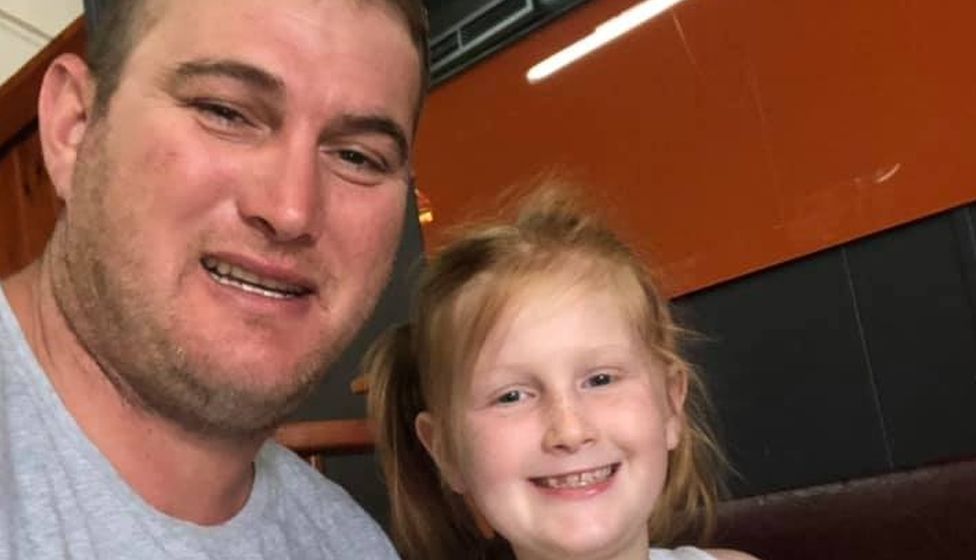
image copyrightROB COSTIGAN
It’s been a hell of an 18 months for Rob Costigan.
The Australian farmer has lost his dream home in the floods currently coursing through the nation. Mr Costigan’s carpeted living room resembles a muddy swamp, his flat-screen TV has floated into the next room, and his kitchen, with its gleaming floorboards, has been obliterated.
Next door, a house belonging to Mr Costigan’s father-in-law has been split open by a fallen telegraph pole.
“I don’t know what to say. Just it’s a kick in the guts, but we’ve got to keep battling on,” Mr Costigan told the BBC.
What makes the loss additionally brutal is that the family fought so hard just a year ago to save their homes from Australia’s bushfires. Last summer, as a massive blaze circled Mr Costigan’s property in a valley near Wauchope, north of Sydney, he spent seven days staving off the fire licking towards his front door.
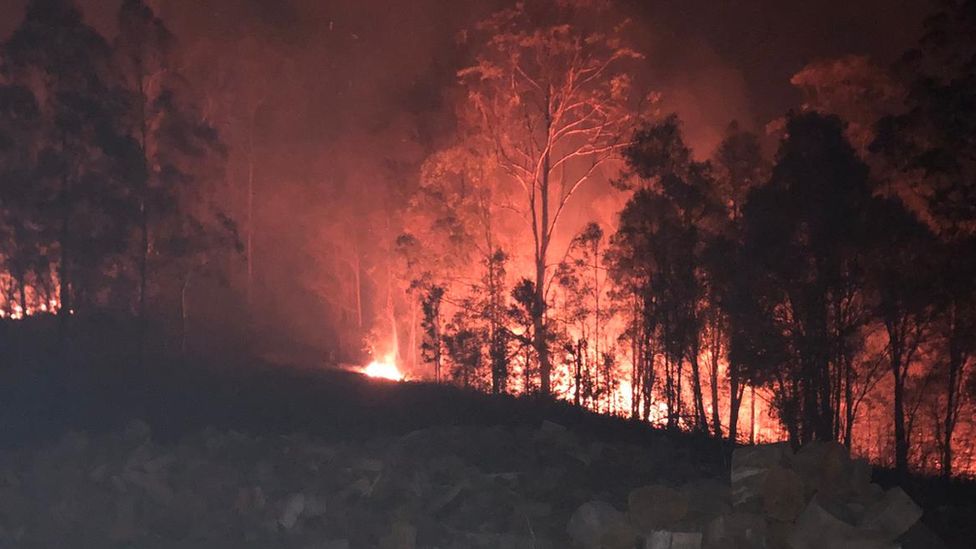
image copyrightROB COSTIGAN
At that time, a years-long drought had made the taps ran dry, so locals pumped water from a creek to fight the blaze. Mr Costigan said he barely slept that week, under an unearthly red sky, but the effort paid off – his house was left untouched and upright.
But today the river is overflowing, the water is still rising, and in the valley his family’s homes have been engulfed.
Like so many in regional communities around eastern Australia this week, the Costigans are reeling from a string of crises. First there was the back-breaking drought; then the unprecedented fires; then the coronavirus pandemic, which crushed the economy; and now a “one-in-a-50-year” downpour.
“If it wasn’t for bad luck, we’d have no luck at all,” Mr Costigan said. “It does feel like you’re being punished for something. Bad karma or something.”
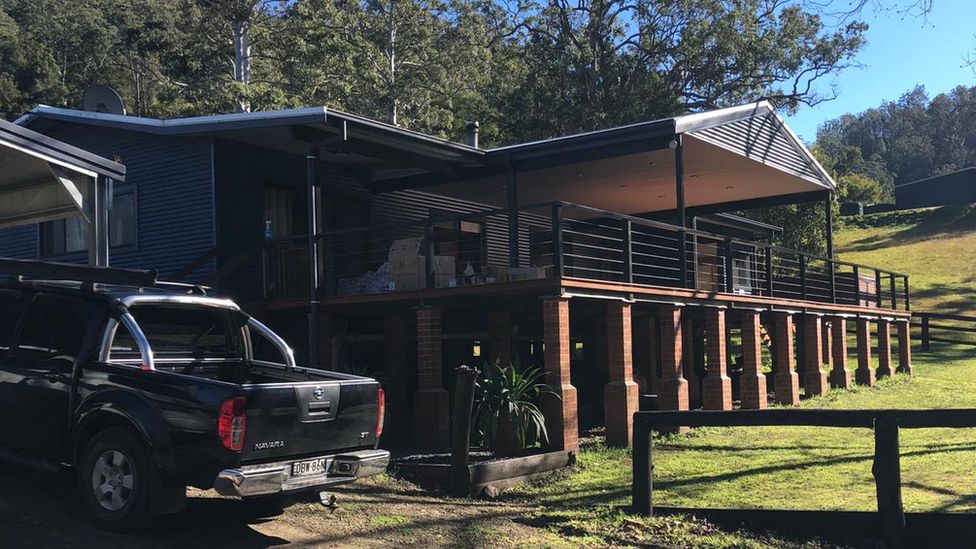
image copyrightROB COSTIGAN

image copyrightROB COSTIGAN
Many of the same farm and bushland areas that were ablaze last year have been hit by the recent floods. Among them are regions north and west of Sydney, the New South Wales Mid-North Coast, and south-east Queensland. Some 10 million people remained under a weather warning on Monday and about 18,000 had been evacuated around New South Wales.
“I don’t know any time in the state’s history where we have had these extreme weather conditions in such quick succession in the middle of a pandemic,” said New South Wales Premier Gladys Berejiklian.
“When you have been through three or four incidents that are life-changing on top of each other, it can make you feel like you are a breaking point.”
In the town of Wauchope, Felicity and April Crocker took on ownership of a cafe in March 2020, viewing it as more fire-proof than their previous jobs. Then the coronavirus hit, wiping out visitors and much-relied on tourists that sustain the small town economically. Not eligible for government support, the Crockers spent everything they had to stay afloat.
Now their shop has been flooded, and their insurance doesn’t cover water or storm damage. They say they’ve “lost so much”.
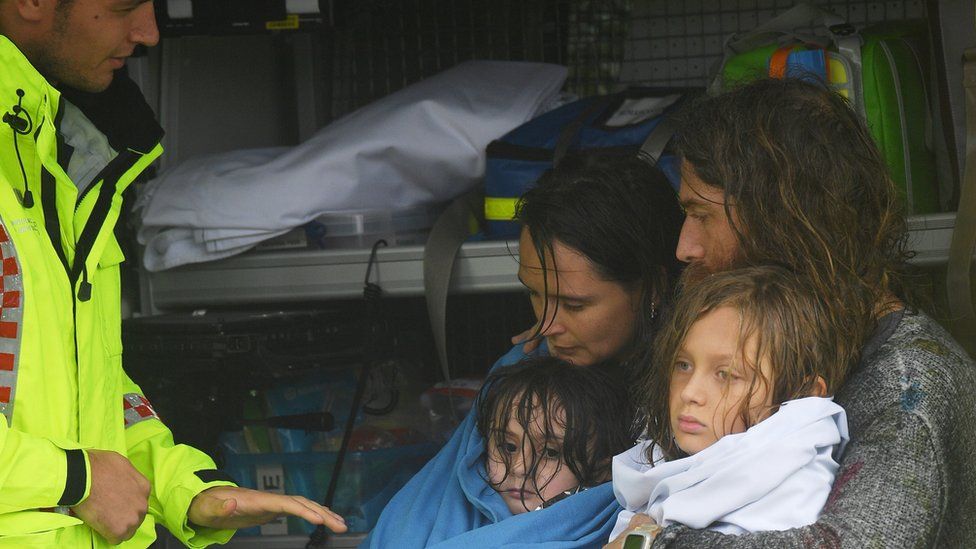
image copyrightEPA
For Lisa Farrawell, in the nearby beach town of Crescent Heads, the rising waters are even more terrifying than the bushfires. Last year, Ms Farrawell was driving through the bush and got caught behind by the flames. She was trapped for hours before being rescued.
“Trees were falling down around us, the heat had started to pop and melt my tires, and everyone was running out of water. You think you’re going to die,” she said.
But she said her situation now felt even worse, with the rain continuing to fall and the water rising. “When will it stop?” she said.
The town is cut off because the roads leading out are submerged. She hasn’t seen her son in three days, after he was evacuated from school at Kempsey, just a short drive away.
“People are feeling sick. They’re feeling sad,” said Ms Farrawell. “I’ve had mates who were born here and who I’ve grown up with and they’re calling me at 3am in a panic. They can’t sleep. This is probably the worst one yet.”
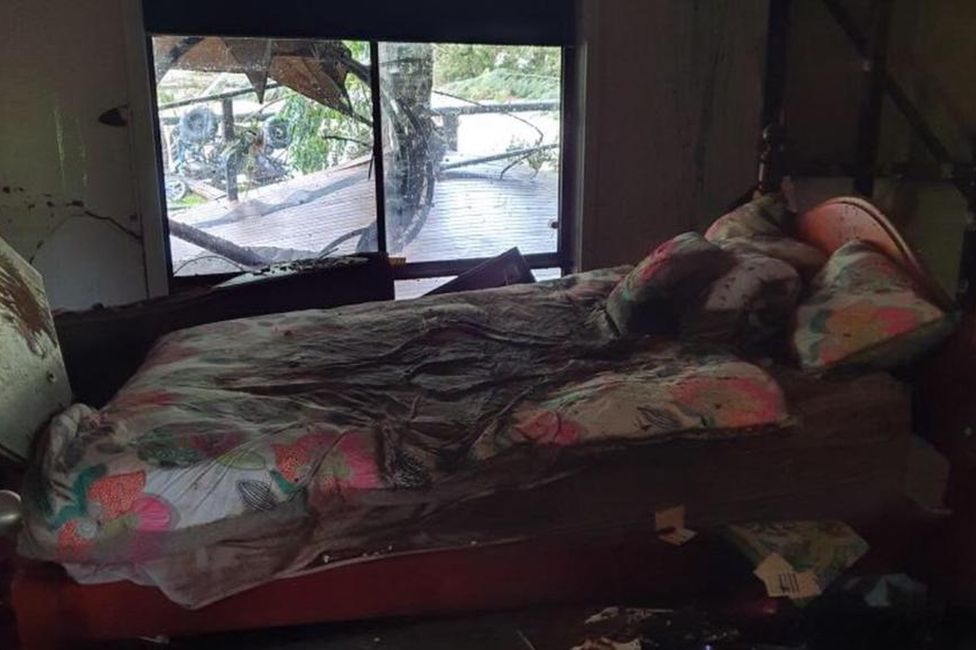
image copyrightROB COSTIGAN
Scores of areas around the country have already been labelled disaster zones, allowing residents to apply for government aid – at least A$1,000 (£550; $770) per adult. But even when the waters recede, combing through the wreckage and recovering – again – will be another mammoth task.
People are in crisis mode and acting on instinct, said Ms Farrawell. They are exhausted and sapped of their spirit.
“I think it’s because they’ve just got their strength back from the fires. It’s hard to fight back from that, and now this one’s hitting them even harder,” she said.
Mr Costigan was more sanguine. His family may need to move into a caravan in the coming months, and his friends have started a crowdfunding campaign to help him rebuild.
“This is Australia,” he said. “This is just the climate we live in.”
Australia’s variable climate has always been known for droughts, fires and floods, but scientists say that the frequency and impact of extreme events has increased with climate change.
“The fire and the drought haven’t beaten us and we’re slowly getting through this pandemic,” Mr Costigan said. “This isn’t gonna stop me from moving forward.”
